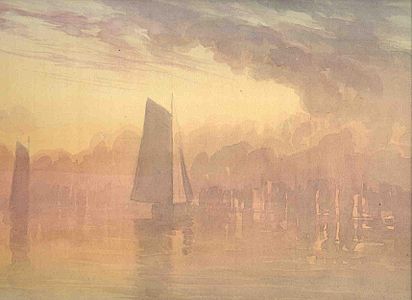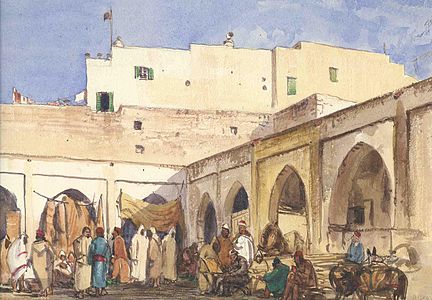Truman Seymour
This article needs additional citations for verification. (September 2008) |
Truman Seymour (September 24, 1824 – October 30, 1891) was a career soldier and an accomplished painter. He served in the Union Army during the American Civil War, rising to the rank of major general. He was present at the Battle of Fort Sumter. He commanded the Union troops at the Battle of Olustee, the only major Civil War battle fought in Florida.
Early life and career
Seymour was born in
He immediately began his military service in the

Civil War
In the months that led up to the Civil War Seymour served under Col. John L. Gardner at Fort Moultrie getting it prepared for the imminent war. When the Civil War began in 1861, Seymour commanded an artillery company in the defense against the Confederate assault on Fort Sumter, after which he received the brevet of major.
Major Seymour commanded the
Seymour served in the
After the Peninsula Campaign, the Pennsylvania Reserves joined the
After November 18, 1862, General Seymour was sent to the
The Battle of Olustee
Maj. Gen.
On February 20, Seymour's force of about 5,500 men met a Confederate force of about 5,000, commanded by Brigadier General Joseph Finegan. The battle took place near the town of Olustee, about 40 miles west of Jacksonville. The ensuing battle produced some of the heaviest losses, by percentage, of any major battle of the war. Although Seymour's division inflicted nearly 1,000 casualties, it received nearly 2,000 in return. General Seymour's force returned, defeated, to Jacksonville, where Union troops retained control until the war ended.
The last year of the war
After Olustee, General Seymour retained command of the District of Florida until March 28, 1864. He then returned to
On January 13, 1866, President Andrew Johnson nominated Seymour for appointment to the brevet grade of major general of volunteers to rank from March 13, 1865 and the United States Senate confirmed the appointment on March 12, 1866.[3] On April 10, 1866, President Johnson nominated Seymour for appointment to the grade of brevet brigadier general United States Army (Regular Army (United States)), to rank from March 13, 1865, and the Senate confirmed the appointment on May 4, 1866.[4]
Postbellum career
Seymour was mustered out of the volunteers on August 24, 1865 but stayed in the Regular United States Army.[2] He served again in the 5th Artillery, and later commanded forts in Florida; Fort Warren, Massachusetts (1869–70); and Fort Preble, Maine (1870–75). He retired from the army on November 1, 1876.
He received the degree of A.M. from
Seymour was also a watercolor painter, and his painting became prolific in Europe during his retirement. Although he is believed to have never sold his paintings, his body of work survives in museums and private collections.
Gallery
-
Hudson River: Sailboats at Sunset
-
Moroccan Market with Red Flag
-
View into Courtyard, Alhambra
-
View of the Hudson River from West Point
See also
- List of American Civil War generals (Union)
- John C. Waugh, The Class of 1846, Ballantine Books, New York, 1994.
- Water Color and Drawings by Brevet Maj. Gen. Truman Seymour, Exhibition Catalog, United States Military Academy, Kent Ahrens, 1974.
- The Drawings and Watercolors by Truman Seymour, organized by the Everhart Museum, Scranton, 1986.
References
- ^ George Washington Cullum (1850). Register of the officers and graduates of the U.S. military academy, at West Point, N.Y., from March 16, 1802, to January 1, 1850. J.F. Trow, printer. p. 273. Retrieved 13 October 2012.
- ^ ISBN 978-0-8047-3641-1. p. 727.
- ^ Eicher, 2001, p. 714.
- ^ Eicher, 2001, p. 737.




